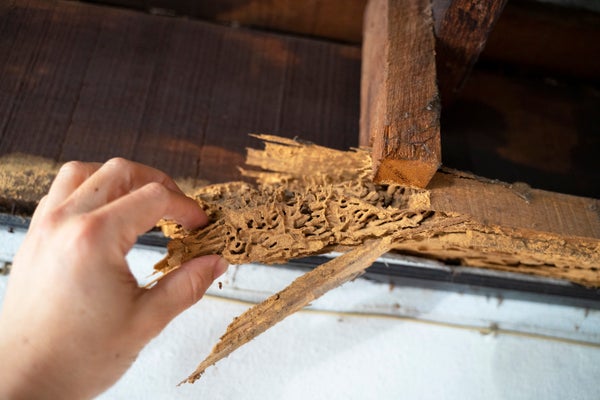A Rare Greenhouse Gas Comes from—Termite Pesticide?
As much as 85 percent of U.S. emissions of sulfuryl fluoride—a rare greenhouse gas and common pesticide used to treat termites—comes from California
Roof damaged by termites.
CLIMATEWIRE | A little-known greenhouse gas is slowly building up in Earth’s atmosphere. And a large chunk of those emissions come from California, a state with otherwise aggressive greenhouse gas reduction targets.
That’s according to a new study that tracked U.S. emissions of sulfuryl fluoride, a pesticide commonly used to treat termites and other household insects. The colorless gas is effective at treating bugs, but it has an unintended side effect: It has a warming effect on the planet when it leaks into the atmosphere.
Studies suggest that as much as 17 percent of the world’s sulfuryl fluoride emissions may come from the U.S. And the new study, published Wednesday in the journal Communications Earth & Environment, suggests that 60 to 85 percent of those U.S. emissions are trickling out of California.
On supporting science journalism
If you’re enjoying this article, consider supporting our award-winning journalism by subscribing. By purchasing a subscription you are helping to ensure the future of impactful stories about the discoveries and ideas shaping our world today.
The study analyzed data from NOAA’s Global Greenhouse Gas Reference Network, which collects air samples from monitoring stations or aircraft around the world. The program keeps tabs on the atmospheric concentrations of dozens of different greenhouse gases, sulfuryl fluoride included.
The researchers found that the biggest sulfuryl fluoride hot spots in the United States were concentrated at just a few monitoring stations in Southern California.
Still, winds and other weather-related factors mean that emissions don’t always originate in the places they’re detected — they could have swept in from somewhere else. So the researchers…
Read the full article here







